Directions (1–5): The following table shows total number of candidates who have cleared the IBPS Clerk prelims exam 2020 and ratio of male to female from five different states of India. Study the table carefully to answer the following questions.
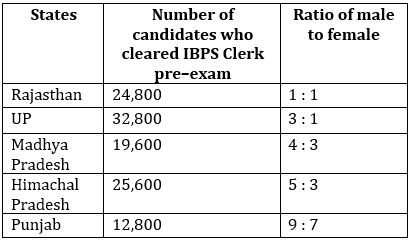
Q1. Find the total number of male candidates who qualified the IBPS clerk prelims exam from UP and Madhya Pradesh together?
(a) 32,800
(b) 35,800
(c) 32,200
(d) 42,800
(e) 37,200
Q2. Find the difference between total male candidates who cleared IBPS Clerk prelims exam from Rajasthan and Himachal Pradesh together and female candidates who cleared IBPS Clerk prelims exam from same states together?
(a) 7200
(b) 6400
(c) 5600
(d) 4800
(e) 6600

Q4. What is the average number of candidates who cleared IBPS Clerk Pre- exam from all states together?
(a) 19200
(b) 20900
(c) 23120
(d) 26400
(e) 18100

Directions (6-10): Table shown below shows population of five different cities. Some data is given in percent while some data is given in numbers. Study the table carefully and solve the following questions.
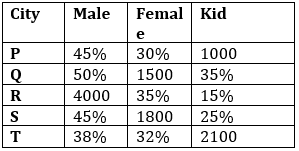
Note: Total population = Male + Female + Kid
Q6. Find the total population in city R is what percent less than that in city Q?
(a) 30%
(b) 25%
(c) 20%
(d) 15%
(e) 17.5%
Q7. If the ratio of number of literate male to number of illiterate male in city S is 11 : 7. What is the difference between number of literate male and number of illiterate male in city S?
(a) 900
(b)1050
(c) 1400
(d) 800
(e) 600
Q8. Find the number of females in city R is what percent less than the sum of number of males and kids in city S?
(a) 25%
(b) 33⅓%
(c) 50%
(d) 66⅔%
(e) 75%
Q9. Find the number of males in city T is how much more than number of females in city P?
(a) 1450
(b) 1420
(c) 1380
(d) 1460
(e) 1490
Q10. Find the respective ratio of number of kids in city R to the number of kids in city S?
(a) 4:5
(b) 5:4
(c) 3:5
(d) 5:3
(e) 2:5
Solutions
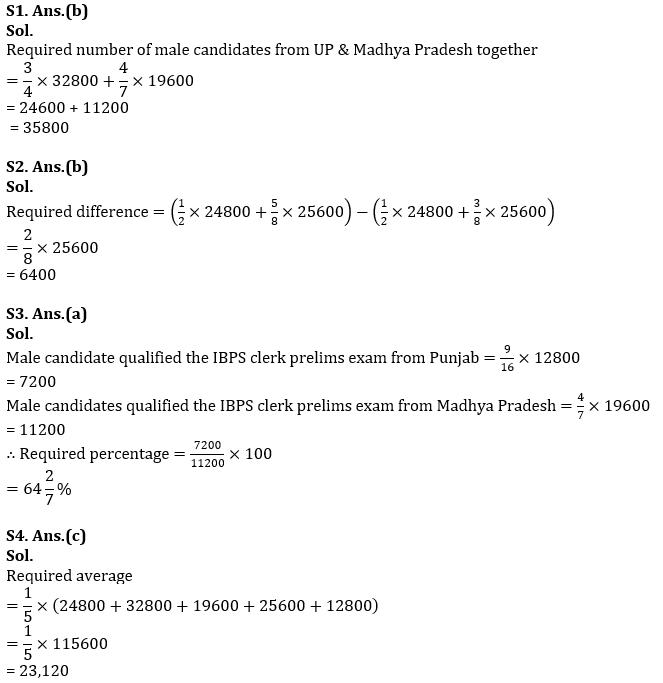
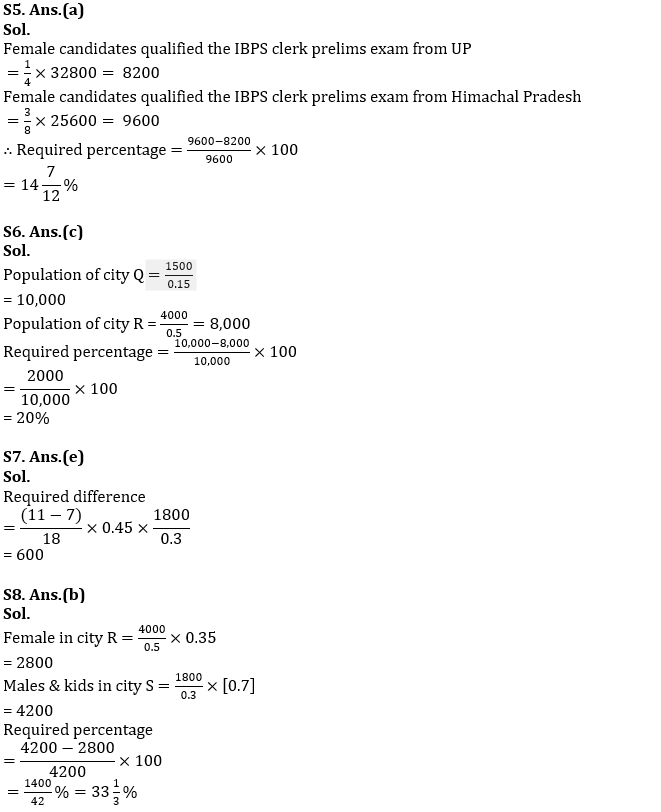
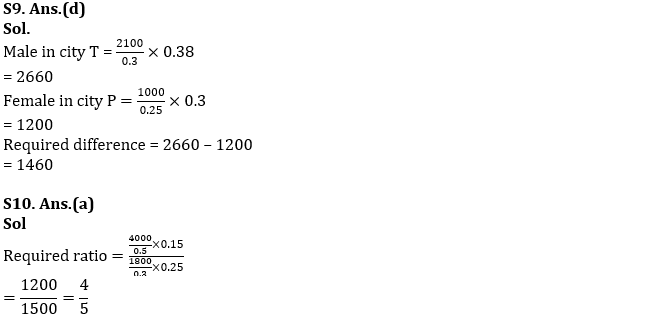
. . . . . . .


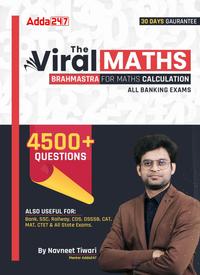


 Quantitative Aptitude Quiz For Bank Main...
Quantitative Aptitude Quiz For Bank Main...
 Quantitative Aptitude Quiz For Bank Foun...
Quantitative Aptitude Quiz For Bank Foun...





